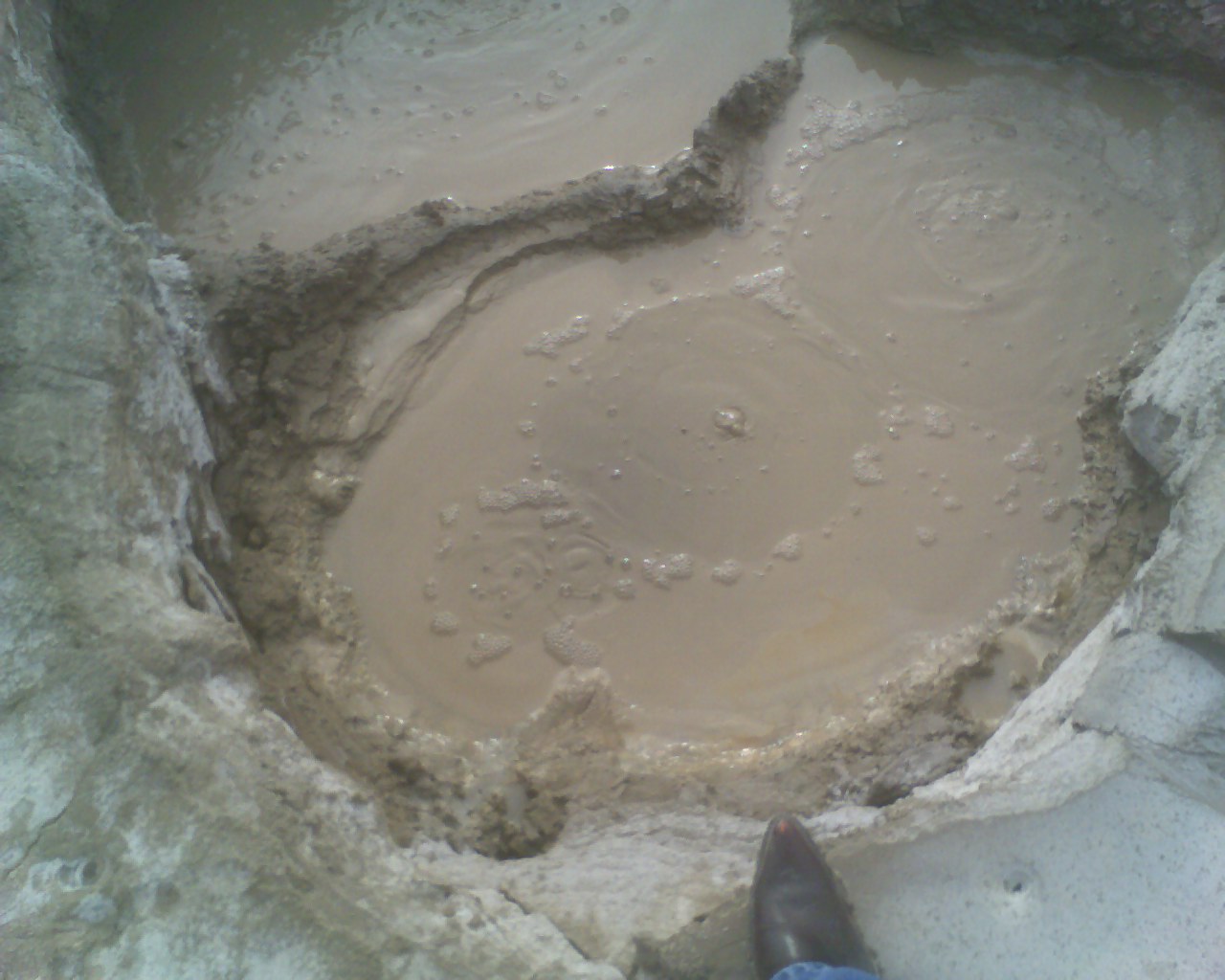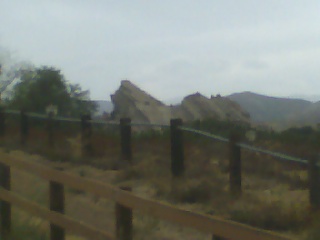 While I’m linking places I’ve seen in my travels to sci-fi, lemme mention a connection to the Mojave Desert, whose southern edge I skirted on my recent road trip.
While I’m linking places I’ve seen in my travels to sci-fi, lemme mention a connection to the Mojave Desert, whose southern edge I skirted on my recent road trip.
To the left is a frame from the original pilot for Star Trek. The pilot was called "The Cage" and did not feature Jim Kirk as captain of the Enteriprise. Instead, the ship was captained by Christopher Pike (played by Jeffrey Hunter).
NBC liked the pilot, but not enough to pick up the show. So they took the unusual step of ordering a second pilot, for which they gave Gene Roddenberry a lot of "notes" (directives for what to do differently).
Among the notes were that Roddenberry needed to LOSE the Number One character (an emotionless female HUMAN first officer played by Majel Berrett, later Nurse Chapel, later Majel Berrett-Roddenberry, later Lwaxana Troi and the Federation Computer Voice) AND he needed to lose the pointy-eared character Spock.
Roddenberry sacrificed the first in order to save the second.
Whether he also needed to lose Jeffrey Hunter as Christopher Pike or whether left for other reasons, I dunno.
But in the original pilot we were treated to an interesting story that was significantly similar to . . . and significantly different from . . . later incarnations of Trek.
(The footage from "The Cage" was also later almost all used in the Star Trek two-parter "The Menagerie"–the one featuring a horribly disfigured Captain Pike [now played by Sean Kenney] in a wheelchair)
In "The Cage," Captain Pike is captured by aliens who can read his mind and give him any fantasy he wants. They’re doing this to try to get him to hook up with a human female they also have so that the two can become the progenitors of a new race on their dying planet.
In one scene (pictured above), they give Pike a fantasy of going back to Earth, where he is married to the captive human cutie and lives in his home town of Mojave (mo-HAH-vee), California.
Upon seeing the ultra-futuristic sci-fi city, Pike declares:
I used to ride through here when I was a kid. Not as pretty as some of the parks around the big cities, but. . . . That’s Mojave. That’s where I was born.
Later, his imaginary wifey remarks:
They say that in the olden days all this was a desert–just blowing sand and cactus.
That’s a pretty good clue that we’re talking about a not-yet-built city in the Mojave Desert, which has been terraformed into being like a more garden-like part of Terra.
But there are a couple of problems:
1) The Mojave Desert ain’t just a bunch of dunes. Like many deserts, it doesn’t fit the typical sand dune model that we have in mind from TV and the movies. Instead, much of it is filled with scrub and there isn’t a sand dune in sight, as my recent post showed.
But this is somewhat soluble since there IS a section of the Mojave Desert that is filled with sand dunes. It’s called the Kelso Dunes (below), and is presumably where Captain Pike’s hometown was built. (Obviously a serious blow was done to LEAVE-IT-ALONE-AT-ALL-COSTS!-environmentalism between now and then. Maybe World War III did that.)

But there’s also a second problem:
2) THERE ALREADY IS A MOJAVE, CALIFORNIA!
It’s near Tehachapi.

I mean, it’s not a BIG town–in 2000 the town only has 3,800 inhabitants–but then Captian Pike indicated that his Mojave was a smaller place.
It also seems to be in at least a semi-desert area, though I have no indication that there are sand dunes there.
So either this Mojave doesn’t exist in the Star Trek universe or it ceased to exist between now and Captian Pike’s time (maybe World War III did that) or it’s been renamed–or something!–and a new Mojave has been built in the Mojave Desert, as the pilot implies.
In any event, the real world Mojave is about three and a half hours north of San Diego.
Maybe someday, I’ll go there, too.















